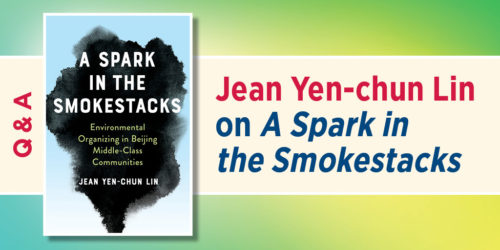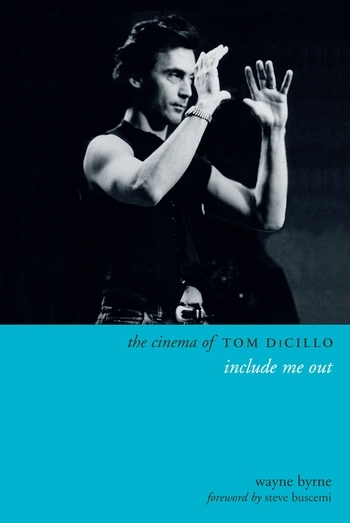Interview with Michael Z. Newman, author of Indie: An American Film Culture
The following is an interview with Michael Newman, author of Indie: An American Film Culture. For more on the book you can read read the Introduction or visit Newman’s blog Zigzigger.
Question: Why “indie” rather than “independent”?
Michael Newman: At some point, maybe in the 1990s, indie became a kind of catch-all for describing edgy, youthful, subcultural, or alternative culture. One thing that appeals to me about the term is its wide usage — I have seen it applied not just to the obvious things like movies and music, but to video games, crafts, bookstores, even supermarkets and hotels. It’s also a term people use to identify persons: indie kids, indie boys or girls. It obviously comes from independent but it shades its connotations away from a sense of independence from big, powerful companies and toward a sense of style and of identity. Independent cinema was at one time a way of describing films that were pretty far from Hollywood in many ways, certainly in terms of financing and distribution if not also in terms of form and style. It still is, but many of the films we would call indie are not really far from Hollywood; they’re marketed by Fox Searchlight and similar companies, which are subsidiaries of major conglomerates. I argue that calling these films indie rather than independent is a mystification. It takes attention away from economics and industry and refocuses it on sensibility, hipness, cool. It aligns off-beat cinema with forms of music and other popular culture in an ad hoc alliance of subcultural distinction.
Q: A key concept in this book is “viewing strategies.” Where does this idea come from, and how does it help explain the significance of indie cinema?
MN: There are different ways of making sense of a cultural category like a film genre or mode of production. We identify westerns by their setting and iconography, horror or pornography by how they elicit bodily responses. A more slippery and amorphous category like indie cinema might not be so easily understood according to a core of shared features. Efforts to define independent cinema sometimes rely on vague or untested ideas like “independent spirit” or “personal cinema” or “character-driven” storytelling. Some indie films tend toward social realism, some tend toward formal play or genre exercise. It can be hard to see what they have in common, to make the category cohere. I borrowed the idea of “viewing strategies” from David Bordwell’s essay “The Art Cinema as a Mode of Film Practice,” in which he identifies three ways in which the audience for postwar foreign art films is encouraged to read them: for realism (whether objective or subjective), authorship, and ambiguity. In some ways I think art and indie cinemas are similar, but they arise in different contexts and address different audiences. The viewing strategies I see as most central in unifying the experience of indie cinema are seeing characters as emblems of their social identity, finding novel form as an invitation to play, and reading indie films as opposed to Hollywood. Not all indie films invite the viewer to adopt all three; some emphasize one or two. But I think these viewing strategies account for how we make sense of these films pretty well, and that together they help explain the coherence of indie cinema as a category.
Q: Some critics would say that indie cinema has become more of a corporate branding strategy than a true alternative to commercial mainstream cinema. What do you think about indie cinema’s potential to be an alternative?
MN: At the heart of indie culture — and this applies as much to indie rock and indie crafts, I think, as it does to indie films — is a tension between two contradictory values. On one hand, indie can be opposed to the dominant social structure and its ideology. It stands as an alternative to mainstream commercial culture. It has the potential to be resistant and progressive. On the other hand, indie functions as an elite taste culture producing distinction for its audience of cultivated connoisseurs. It is a site for the production of cultural (or subcultural) capital. The fact that the media industries exploit the indie audience, marketing indieness to them, hardly seems to make indie culture less authentic as an alternative, because that authenticity was always a performance for the sake of producing distinction.
I’m most interested in understanding indie culture on its own terms, and appreciating the values circulating within its community of filmmakers, distributors, critics, exhibitors, and audiences. If all agree that indie cinema constitutes an alternative to Hollywood, the circulation of indie films within the institutions of the major media conglomerates hardly seems to invalidate that meaning. I certainly wouldn’t nominate myself the arbiter of indieness. But I’m also interested in those cases in which the community struggles over conferring the designation of indie on a film. This sometimes happens with the indie blockbusters like Little Miss Sunshine: they start to seem less indie upon achieving wider commercial success. The value of indie cinema as an alternative is reaffirmed when critics and audiences deny the authenticity of films like these. But the fact that they sell as indie to a wider audience ironically makes them really important examples of alternative cinema to many viewers, and I would never say they’re wrong to value them that way.
Q: While the typical reader is probably familiar with many of the films discussed in Indie, let’s imagine a reader who is new to this cinema. Where should they start?
MN: It’s hard for me to imagine never having seen sex, lies, and videotape and Pulp Fiction. I would say sex, lies is historically significant both as an American independent film that won the top prize at Cannes and for the way it was marketed effectively by Miramax. Its low-key storytelling and adult themes probably helped establish a tone for a certain kind of indie film, but I don’t know that anyone considers it a great work now. Pulp Fiction was hugely influential and is regarded as perhaps the best American film of the 90s, a heyday of indie cinema. I would recommend Blood Simple as an example of an indie genre pastiche and Welcome to the Dollhouse and Lost in Translation as examples of character-centered realism. Juno is a good example of a contentious indie film, performing its own indieness but ultimately judged by many people as too mainstream. Examples like these reveal how indie cinema can be different things to different people.





